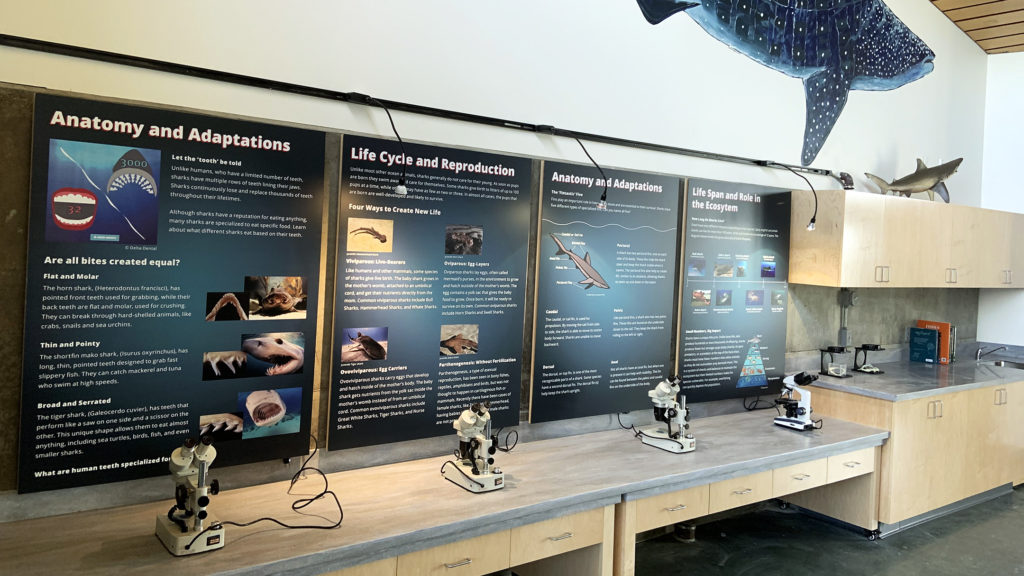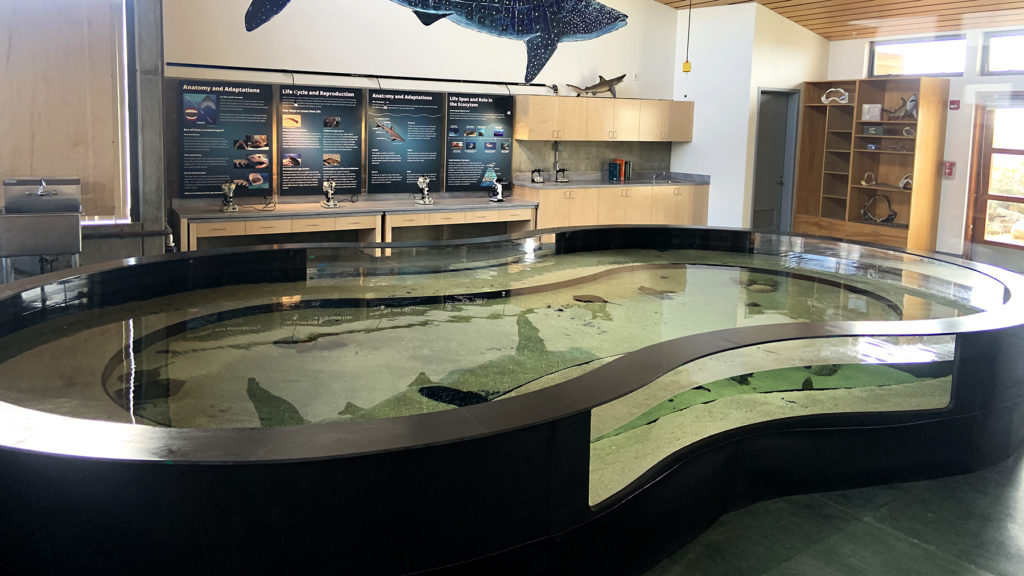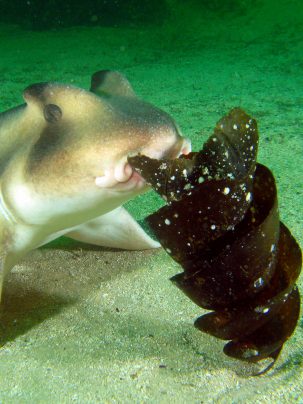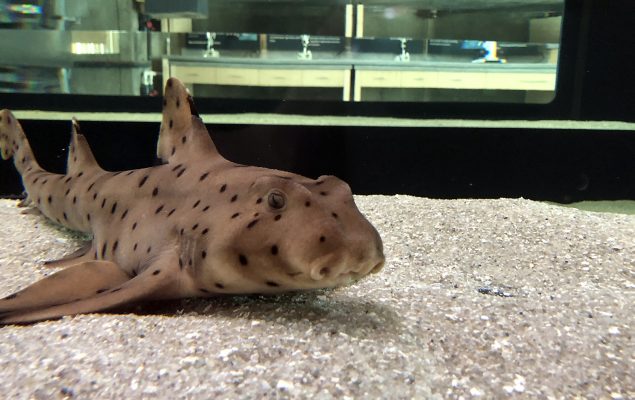We recently completed the Ocean Institute's new Sahm Marine Education Center, anticipated to open later this year in Dana Point, CA. Part of the Institute's shark education program for visiting students and the public, the center will provide engaging educational experiences that promote science, technology, engineering, and math (STEM) principles.
Located in the Institute's former Ecology building, the new live shark exhibit involved the renovation of an existing 3,000 square-foot waterfront building, which now features horn sharks, a shark nursery, and interactive exhibits and artifacts related to sharks. The feature element, a 4,000-gallon saltwater tank, was custom-designed to accommodate the California horn shark, one of the only creatures to lay a spiral egg.
The fiberglass tank, sized 10-times larger than the length of the 2-foot horn shark, has rounded ends to give the sharks the opportunity to swim in a natural circular or figure-8 pattern. Salt water was drawn from the harbor and filtered before filling the tank. The tank sits low to the ground, offering a "hands-in" experience for observers/students. The remodel includes a creature food prep kitchen, quarantine room, and upgraded lighting.
The $1 million shark exhibit was just weeks from opening when the Ocean Institute was shut down as a result of closures during the Covid-19. Like many other businesses, the Institute has been hard hit by the shut downs, going from a staff of 127 employees to just eight volunteers, prompting them to reach out the community for donations to stay afloat and ensure the well-being of their marine animals. Kollin Altomare stepped in to help "feed the sharks" by donating $1/day for a year.
(Photos courtesy of Wendy Marshall, VP of Education - Ocean Institute)
We recently completed the Ocean Institute's new Sahm Marine Education Center, anticipated to open later this year in Dana Point, CA. Part of the Institute's shark education program for visiting students and the public, the center will provide engaging educational experiences that promote science, technology, engineering, and math (STEM) principles.
Located in the Institute's former Ecology building, the new live shark exhibit involved the renovation of an existing 3,000 square-foot waterfront building, which now features horn sharks, a shark nursery, and interactive exhibits and artifacts related to sharks. The feature element, a 4,000-gallon saltwater tank, was custom-designed to accommodate the California horn shark, one of the only creatures to lay a spiral egg.
The fiberglass tank, sized 10-times larger than the length of the 2-foot horn shark, has rounded ends to give the sharks the opportunity to swim in a natural circular or figure-8 pattern. Salt water was drawn from the harbor and filtered before filling the tank. The tank sits low to the ground, offering a "hands-in" experience for observers/students. The remodel includes a creature food prep kitchen, quarantine room, and upgraded lighting.
The $1 million shark exhibit was just weeks from opening when the Ocean Institute was shut down as a result of closures during the Covid-19. Like many other businesses, the Institute has been hard hit by the shut downs, going from a staff of 127 employees to just eight volunteers, prompting them to reach out the community for donations to stay afloat and ensure the well-being of their marine animals. Kollin Altomare stepped in to help "feed the sharks" by donating $1/day for a year.
(Photos courtesy of Wendy Marshall, VP of Education - Ocean Institute)




